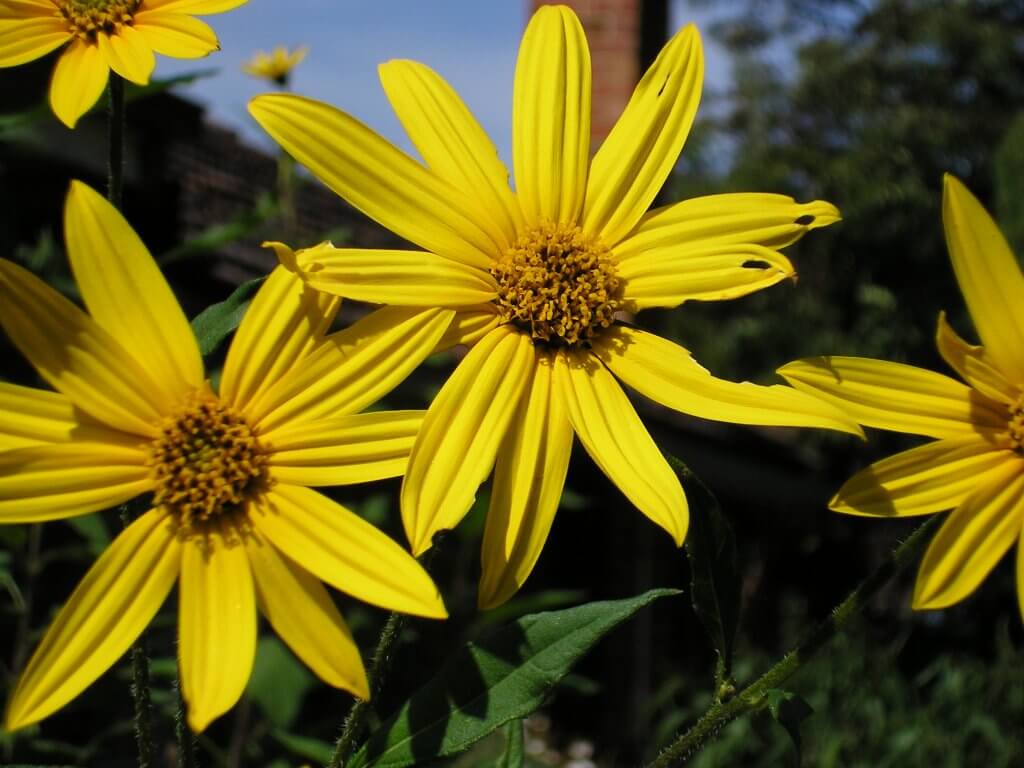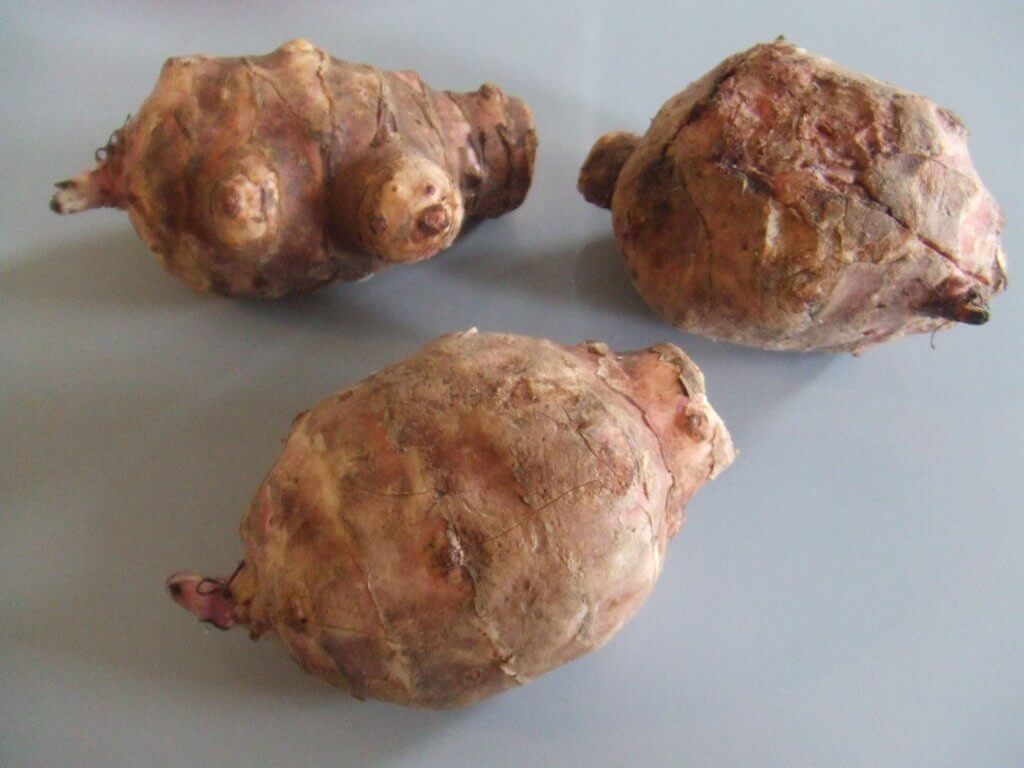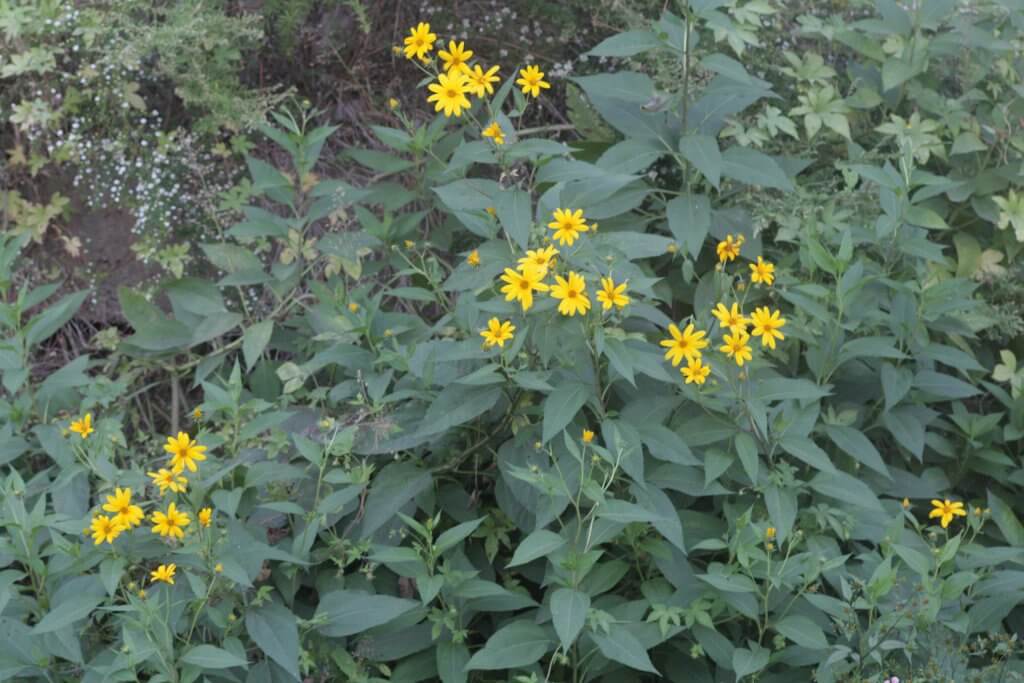Jerusalem artichoke (Helianthus tuberosus), is a perennial plant and a member of the sunflower family. Its bright yellow, and proudly standing flowers flaunting this fact. Other apt names include sunroot, sunchoke and the sweetly named earth apple. Native to the plains of the midwest and also stretching into the eastern states, the Jerusalem artichoke can be found along field and river edges and areas of disturbed soil.

Long, bright yellow and striated petals radiate from a center of smaller deep yellow florets. The flower head is usually no wider than 8cm in diameter. The entire plant itself can reach heights of up to 12 feet, with wide diamond shaped leaves at the base, and smaller opposite leaves towards the top. With an appearance not unlike a ginger root, the tubers form lengthened shapes that cluster together underground.
Edible parts and other uses
As the latin name suggests, the tubers of the Jerusalem artichoke are particularly notable and in fact edible. They are a delicious ingredient to work with in the kitchen. They work perfectly with other roasted vegetables as a side dish, and can be cooked within soups and stews. You can even chop them and add them raw straight into salads.
Their rich and nutty flavoring is garnering attention from around the world as a number of notable chefs welcome it into their recipe books. Within Germany, Jerusalem artichokes have also been carefully processed and distilled into a number of spirits.
Jerusalem artichokes were a coveted food source in Native American communities. They were carefully cultivated and even believed to have been prepared for Lewis and Clark by an indigenous woman.

Cautions
A mild caution is that the carbohydrate, inulin, within tubers which have not undergone a cold spell, can create excessive gas as it moves throughout the digestive system. It is best to harvest the tubers when cold weather sets in, and the inulin begins to breakdown.
No toxic lookalikes exist, although the Jerusalem artichoke could be mistaken for other native wild sunflowers. The roots of these common sunflowers are also edible, but are less numerous and not as flavorful.
Foraging
Look for Jerusalem artichokes in areas that receive a large portion of sunlight throughout the day. They favor areas of well draining, disturbed soil, where the tubers have space to form. You may need to dig up to 30cm down to find the tubers, but the effort is worth the reward.
Harvesting the tubers is best in late fall, just after the first few frosts have hit. This is because the inulin within the tubers is usually broken down into fructose during colder spells, greatly improving their taste. When stored, especially in a chilled environment like a fridge or garage, their sweet flavor is greatly enhancing.
As foraging is best in fall, identifying the plant can be tricky as the leaves and stalks begin to die back. Look for old weathered stalks and dried flowers or seed heads. Or alternatively, locate the plant when flowering in late summer, and mark the location so you can return to the same patch later in the year.

Did you know…
Uncertainty clouds the naming of the Jerusalem artichoke. History cannot find a definite link between the city of Jerusalem and the native American plant. Some suggest it could be linked to English settlers mispronouncing the Italian settlers name for the plant ‘girasole’, meaning sunflower. Although also not resembling an artichoke, many claim it has a similar flavoring to the commonly cultivated European plant.
Conclusion
Rich in dietary fiber as well as protein, the Jerusalem artichoke is beginning to gain attention once again for its versatility and taste. And rightly so. They make a fantastic wild edible that you may even choose to grow at home.
—————Written by Hannah Sweet
Hannah is a freelance writer and graphic designer from the UK. With a penchant for travelling, photography and all things botanical, she enjoys writing about a wealth of topics and issues, from conservation and slow living, to design and travel. Learn more about her writing and design services at www.sweetmeanders.co
Many of our readers find that subscribing to Eat The Planet is the best way to make sure they don't miss any of our valuable information about wild edibles.
See our privacy policy for more information about ads on this site






